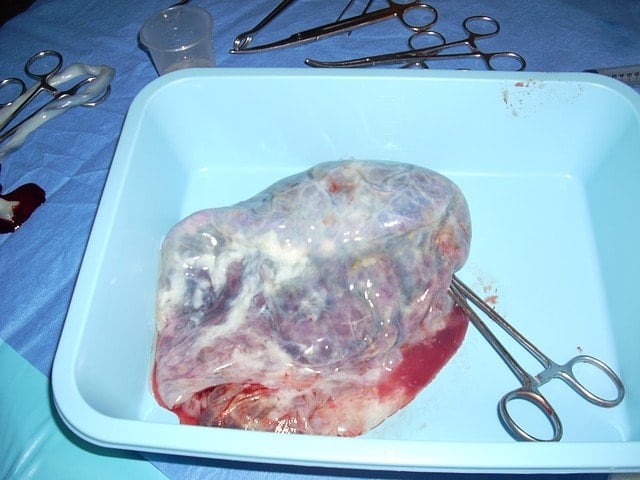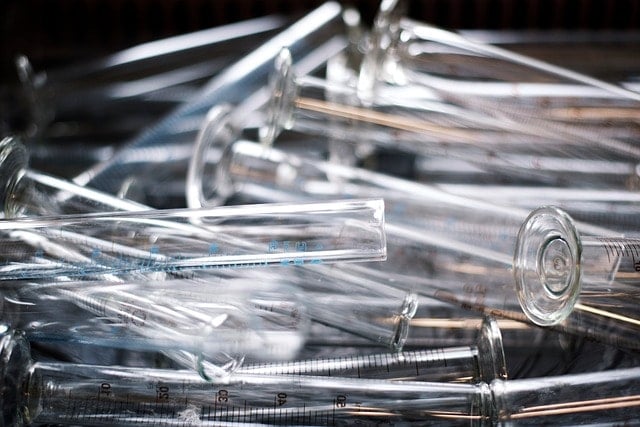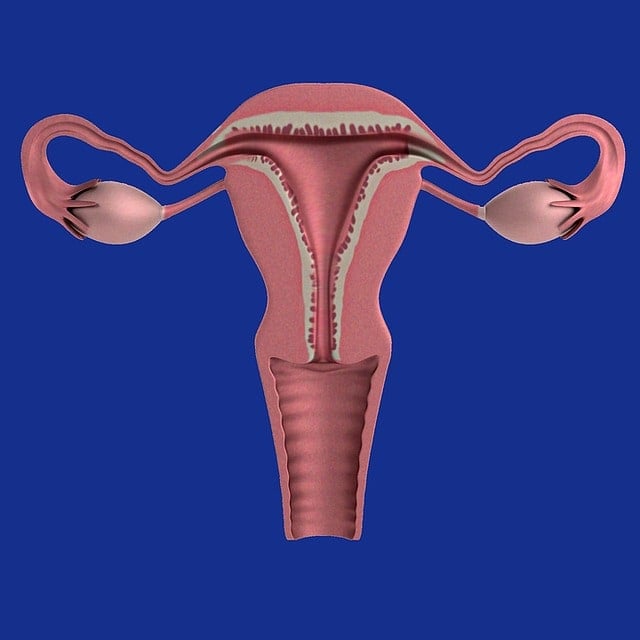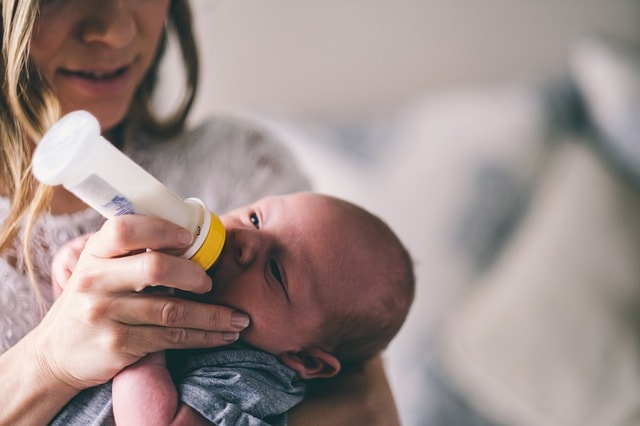Introduction
There is a growing interest in human placentophagy (also spelled placentophagia), which is the scientific term for either eating your own placenta or eating placenta pills after childbirth (1).
Placentophagy is a common practice among non-mammals and has been described as being “conspicuously” among humans worldwide. Absent until now, that is. It was first reported in humans in the 1970s and is growing in popularity, especially among middle-class white women (1).
Proposed benefits of human placentophagy include a reduced risk of post-partum hemorrhage, increased milk production, energy boosting, enhanced bonding, and immune boosting.
One thing is for sure – this odd practice is not being driven by the medical profession. A recent study showed that approximately 60% of obstetricians and gynecologists are “undecided” about placentophagy (2).
So who or what are the driving forces behind placentophagy? Experts suspect that it is probably a combination of influences, including the natural birth industry and celebrity endorsements (3). Of course, we can’t forget commercial interests. At the end of the day, placentophagy is a business, and there is big money to be made here.
A certain Kim Kardashian is a fan of placentophagy. She claims that she did “her own research” and was so convinced by “her own research” that she decided to eat her own placenta. I have to admit that there are many things that I cannot compete with Miss Kardashian on. However, when it comes to medical research, I’m going to guess that I have the edge here.
So before we invite Ms Kardashian (the firm believer) to give a lecture to the American Society of Obstetrics and Gynecology (the undecided), let’s see if Ms Kardashian’s “research” on the benefits of placentophagy hold up.
The Problem
Pregnancy and delivery are emotional rollercoasters for women. The combination of major fluxes in hormones, combined with the inevitable sleeplessness that comes with a newborn, can be stressful even for the most enthusiastic mom.
Equally, after delivery, that delightful pregnancy glow and bump (that you were so proud of) can quickly transmute into a very unusual body shape that doesn’t quite belong in pregnancy clothes and definitely doesn’t fit back into your own pre-pregnancy clothes.
This can really challenge any woman’s self-confidence and self-image. Add to that the social isolation that many new moms experience. Now enter Ms Kardashian and her “research portfolio” for the perfect storm.
I can totally understand why any new mom could look at Ms Kardashian and think they would absolutely eat their own placenta if they could just look a little bit more “Kardashian.”
With great power comes great responsibility, Ms Kardashian.
Have you used your power wisely?
What Exactly Is Placenta Eating?
There are three main approaches to placentophagy. (The following section comes with a disclaimer as it is a bit distasteful for some people. If you squirm watching Hannibal Lecter, then the following section might not be suitable reading material for you.)
- Eat the placenta itself once it has been steamed to reduce the risk of infectious diseases. This is exactly as it sounds. The placenta is a slippery, blood-rich material. The closest thing I can compare it to would be liver. (Just to be clear, I have never eaten human liver, but I am remembering a childhood where my mother force-fed me cow’s liver – ugh!). There are endless ways that you can eat a human placenta, e.g. “tartare” style, cooked, in a sandwich or blended in a smoothie. In fact, don’t worry about ideas – you can buy a book on Amazon entitled DIY Placenta Edibles: Smoothies + Tinctures + Chocolates: (Volume 3). (4) Yes, unbelievable as it may sound, this book is on volume 3! Like I said, this is a big business.
- Convert your placenta into capsules. If the thought of eating your placenta “tartare” style is too much for you, this could be the perfect alternative. There is an entire industry out there that will take your placenta and turn it into more palatable capsules. The process involves steaming, dehydrating, and grinding the placenta to produce a fine powder, which is then placed in capsules. It can even be privately labelled so that the box says “Jenny’s ” or “Kim’s Placenta.” Each placenta yields between 200 and 400 pills.
- The final option is to go to Amazon and buy any one of the 200 placenta-product pills that are for sale. These pills come from cows, lamb, and deer. It is hilarious to read the marketing that goes with these pills. Deer placenta is positioned (and priced) as a superior product to cow or lamb placenta. The funniest part is that you can buy “vegan” placenta pills. Yes, vegan placenta pills come free of allergens, soy, and dairy. Hello, has anyone noticed these pills actually come from animals? So how on earth can they be vegan pills?
Logistics:
Preparation of your own placenta takes between 24 and 48 hours, depending on whether the placenta is refrigerated or frozen. It can be done in your home or can be sent to a certified placenta outfit. Some people opt for the home option to eliminate the risk of any mix-up with the placenta. After all, who wants to eat someone else’s placenta? Not me, for sure! Preparation of the placenta costs between $200 and $400. Animal-derived placenta pills cost on average $10 for 100 pills.
Certification in placenta encapsulation takes approximately nine months and costs between $350 and $500.
Placenta-derived products are not classified as food by the FDA. Equally, placentophagy is currently not regulated by the FDA.
What’s Actually in a Placenta

As early as five days after fertilization, the placenta develops from the trophoblast, which is the outer layer of cells of the blastocyst. The placenta is the interface between the mother and fetus for the entire duration of the pregnancy. It is absolutely essential to normal fetal development.
The placenta plays a number of key roles, including gas exchange, transport of critical nutrients, elimination of waste material, and production of hormones and proteins. It also helps prevent rejection of the fetus by the mother’s immune system – after all, the fetus contains 50% paternal tissue, which is alien as far as the mother’s immune response is concerned. Essentially, the placenta acts as the lungs, liver, gastrointestinal tract, kidneys, and bodyguard of the fetus.
Typically, the placenta contains protein (amino acids), fiber, fat, minerals (sodium, potassium, phosphorus, calcium, iron, magnesium, zinc, copper, manganese), and hormones (estradiol, progesterone, testosterone, growth hormone).
Once the baby is delivered, there is a reduction in the surface area of the uterus. This results in a shearing force which causes the placenta to separate from the uterine wall. The placenta is delivered in what is known as “the active management of the third stage of labor.” In other words, the placenta is actively delivered instead of being allowed to just be expelled in its own time. This is done to minimize the risk of bleeding.
The newly delivered placenta is examined carefully to ensure that no parts of the placenta have been retained inside the uterus. Retention of placental products could lead to maternal bleeding or infection at a later stage.
Having stood in many delivery rooms for a number of years, I can tell you that placentas vary hugely in appearance. Again, here comes a Hannibal Lecter moment, so please skip ahead if you are squeamish.
Some placentas have that very beefy, healthy look, but some look very old and tired. The old, tired-looking placenta can happen in women who are older, who have hypertension, or when pregnancy goes beyond 40 weeks.
So let’s get real here. Let’s assume for a moment that placentophagy is health-promoting (big big assumption). It is still utterly daft to assume that all placentas are created equally. This just isn’t true. While I can’t imagine eating my placenta, I would definitely not eat a haggard, old-looking placenta and expect to get an energy boost!
It is also worth mentioning at this time that the placenta is sometimes sent to the laboratory for examination. This may be done for conditions such as intrauterine growth retardation, pre-term birth, stillbirth injuries, and infection.
The placenta may be fixed in formalin for histopathological examination, or fresh samples may be sent to the microbiology lab to look for infectious diseases. Placentophagy is not an option for these women.
Is There Any Research?

There are a grand total of 27 papers written on placentophagy. Lucky, as this means that Ms Kardashian did not have too much reading to do for her “own research.”
To put this into context, there are over 40,000 publications on breastfeeding.
Does It Help to Balance Your Hormones?
Theoretically, the placenta contains bioactive hormones and could potentially help balance hormones.
One study analyzed human placentas and showed that there were physiological levels of 16 out of 17 placental hormones in the placentas examined (5).
However, there is no proof that these placental hormones can actually be absorbed or reach the threshold necessary for physiological effects in vivo.
Additionally, an interesting study showed that ingestion of human placenta by rats did not result in any changes in the hormone levels in the rats, leading investigators to speculate that there may be a species-specific effect (6). If that is the case, it means that humans may not benefit from animal placenta pills. This effectively undermines the entire industry of giving animal placenta pills to humans.
Bottom Line
There are no studies proving that placentophagy helps balance hormones.
Does It Replenish Depleted Iron Levels?
There is a single randomized, double-blind, placebo-controlled trial looking at the effect of placentophagy on iron status (7). The study compared iron status in 10 women who received placenta pills to 13 women who received a placebo.
The study showed no statistically significant difference in maternal iron status between women who took placenta supplements versus women who took placebo pills. In fact, daily intake of placenta pills provided only 24% of the recommended dose of iron for lactating women.
Bottom Line
Placentophagy is not an effective strategy for iron supplementation.
Does It Assist the Uterus to Return to Its Pre-Pregnancy State?

There are no studies on the effect of placentophagy on uterine involution in women (return of the uterus to the pre-pregnancy state). The placenta is rich in prostaglandins, which play a key role in involution of the uterus. Again, we have the problem filling in the reality-rhetoric gap.
Are the prostaglandin levels in the placenta high enough to have a clinical effect? Are prostaglandins absorbed in sufficient quantities to affect human physiology? Do cow/deer/lamb prostaglandins work in women?
Bottom Line
There is insufficient evidence to support placentophagy as an aid to assist the uterus’s return to its pre-pregnancy state.
Does It Reduce Post-Natal Bleeding?
Oxytocin is used in the active management of the third stage of labor to reduce the risks of post-partum hemorrhage. The placenta contains small amounts of oxytocin and could theoretically play a role in reduction of post-partum bleeding.
However, as always, there are a lot of “ifs.”
- If the levels of oxytocin are high enough in the first place.
- If the oxytocin is absorbed.
- If oxytocin derived from animals induces physiological change in humans.
Bottom Line
There are no human studies looking at the effects of placentophagy on post-natal bleeding. This means that we are left with the “ifs.”
Does It Increase Milk Production?

There are two studies evaluating the effect of placentophagy on milk production. In the first study, 15% of respondents reported an increase in lactation (3). This study was a self-reported survey. A 15% positive response rate in a survey would be classified as a negative outcome, as this is below the placebo response rate.
The second study involved 210 patients and was a randomized control trial (8). In this study, a total of 86% of women noted an increase in milk production. The study was conducted in 1954 and is not available online. The 1954 paper is described in a recent review paper on placentophagy as having “major limitations” (9).
Bottom Line
There is no convincing evidence to support placentophagy as a galactagogue.
Does It Increase Your Energy Levels?
A 2013 study interviewed 189 women who had consumed their own placenta (3). This is the same self-report survey that evaluated milk production. This time the survey showed that 26% of women reported an increase in energy following placentophagy. Again, a result of 26% would not be considered a positive result, as it is less than the placebo response.
Bottom Line
There is no proof that placentophagy boosts energy.

The Very Latest Research
A 2019 paper shared the results of a matched cohort study looking at the effects of placentophagy in women with mood disorders (13). This Canadian study looked at data from 138 women who were perinatal and had mood disorders. A comparison was made between the women who had used placentophagy to those who did not for possible effects on mood, lactation, energy or vitamin B12. There was no evidence found to support beneficial effects of placentophagy for any of these conditions.
Are Placenta Pills Safe?
Placentophagy is associated with significant health risks.
Pregnant women should not eat human placenta or animal-derived placenta, as it increases the risk of miscarriage (9).
They key concern with placentophagy relates to infectious diseases. The temperatures used to prepare the placenta are too low to eliminate key infectious pathogens.
There is a case report of an infant who developed group B streptococcal sepsis (10). The mom of the infant had consumed placental pills. Group B streptococcus were identified from the placental pills.
The CDC are generally concerned about the potential for placental pills to pass on infection and specifically notes that the temperatures used in placental encapsulation may be insufficient to eradicate key viruses such as HIV, hepatitis, or Zika. Temperatures of 158 degrees F are required for the inactivation of hepatitis A, while HIV inactivation requires heating to a temperature of 133-144 degrees F.
A study published last year showed that placenta pills contain modest concentrations of 14 trace elements (11). The study found that placental pills contain levels of cadmium, selenium, lead, and mercury in low but detectable amounts. This is understandable considering the fact that the placenta has a dual role to both act as a barrier to protect the developing fetus and eliminate waste material from the fetus.
Another concern is the potential development of choriocarcinoma (cancer of the uterus), as the ingestion of placental tissue can theoretically immunize the mother against any placental cells remaining in the uterus (9).
There was a case report this year of a 3-month old child who developed breast budding and vaginal bleeding which was attributed to infant endocrine disruption from maternal placentophagy (14).
There are two outstanding issues that need to be addressed.
-
Why do other animals eat their placenta?
This is a very reasonable question. It seems that other animals eat their placenta to disguise the fact that a new offspring has been born. This protects them against predators. It has been suggested that humans may have consumed their placentas for the same reason prior to the discovery of fire.
Anthropologists have proposed a “fire hypothesis,” which states that cooking the placenta produced fumes that were toxic to humans, which led to the end of human placentophagy (until now) (12).
-
But what if I ate my placenta and it worked for me?
This is another very valid consideration. Experts in the area say that women who opt for placentophagy are not representative of women in general. Placentophagy is not covered by insurance or recommended by most physicians.
This means that women have to organize the placentophagy themselves and pay out of pocket. In other words, these women are usually pretty convinced that it will work. This selection bias increases the chances that these women will experience a placebo effect.
Conclusion
A 2019 study looked at the attitudes, knowledge and beliefs of women during pregnancy and the post-partum period to placentophagy (15). Almost one quarter of 1000 study participants had consumed their own placentas. The authors of the paper state that the motivation of these women for their placentophagy was for 'unproven benefits, such as anemia and post-partum depression, for which there are other management alternatives'.
A comprehensive review on placentophagy was published in the American Journal of Obstetrics and Gynecology last month which found that no placental nutrients or hormones are retained in sufficient quantity after encapsulation to have any physiological benefit (9). Dr Alex Farr, an Austrian author, concludes that “there is no scientific evidence of any clinical benefit of placentophagy and there is evidence of an actual risk.
Based on this, health care providers have no professional responsibility to offer placentophagy and there is professional responsibility to direct against it.”
That is pretty direct and conclusive.
Methinks that Ms Kardashian should stick to reality TV and leave the science to people who are actually qualified to do it.

Leave a Reply